June 9: Travel to Gallipoli
Today is a bus-travel day, with stops at two historical sites. We are on the bus at 7 am, first rest stop at 9 am, next rest stop at 11 am, at Gallipoli by noon, at lunch at 1 pm, and on the ferry over the Dardanelles to Troy at 2 pm. This scheduling is masterminded by Ali. Our connections are perfect: lunch is on the table when we get to the cafe, no long wait for the ferry.
The bus is comfortable. Ali sometimes talks to all of us about Turkey, past and present, and is always willing to answer questions. We can get up and walk around, it's roomy, we have water and can pick up snacks at rest stops. Interesting views out the big windows. But still, we find bus travel wearying. The air-conditioning dries out our throats.
We first travel west out of Istanbul, above the Sea of Marmara. Reminder: the European piece of Turkey is separated from the much larger Asian portion by a strait and a sea and another strait: Bosphorus, Sea of Marmara, then the Dardanelles. We first skirt the top of the Sea of Marmara then drive down the Gallipoli peninsula, which borders the Dardanelles. We will cross the Dardanelles on a ferry to the Asian side of Turkey, where we will spend the rest of our tour.
I used my camera to stave off boredom and to document the travel with photos and also times and locations by geotags.
Half an hour of highway time and we are still in the outskirts of Istanbul. The geotag has us about a third of the way across the top of the Sea of Marmara when these photos were taken. This density of housing structures has been going on for miles. Note a few high rises infiltrating the skyline.
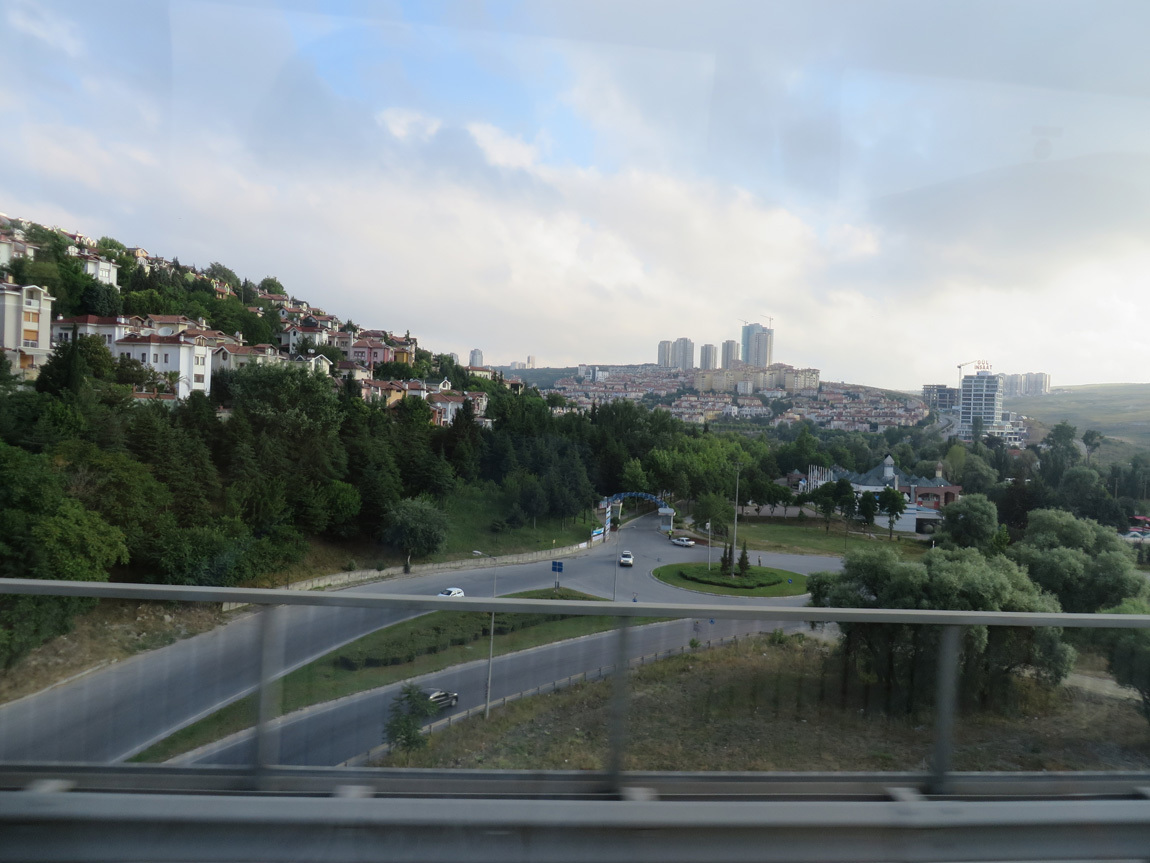
Most of the buildings are blocky. Most face the same way.
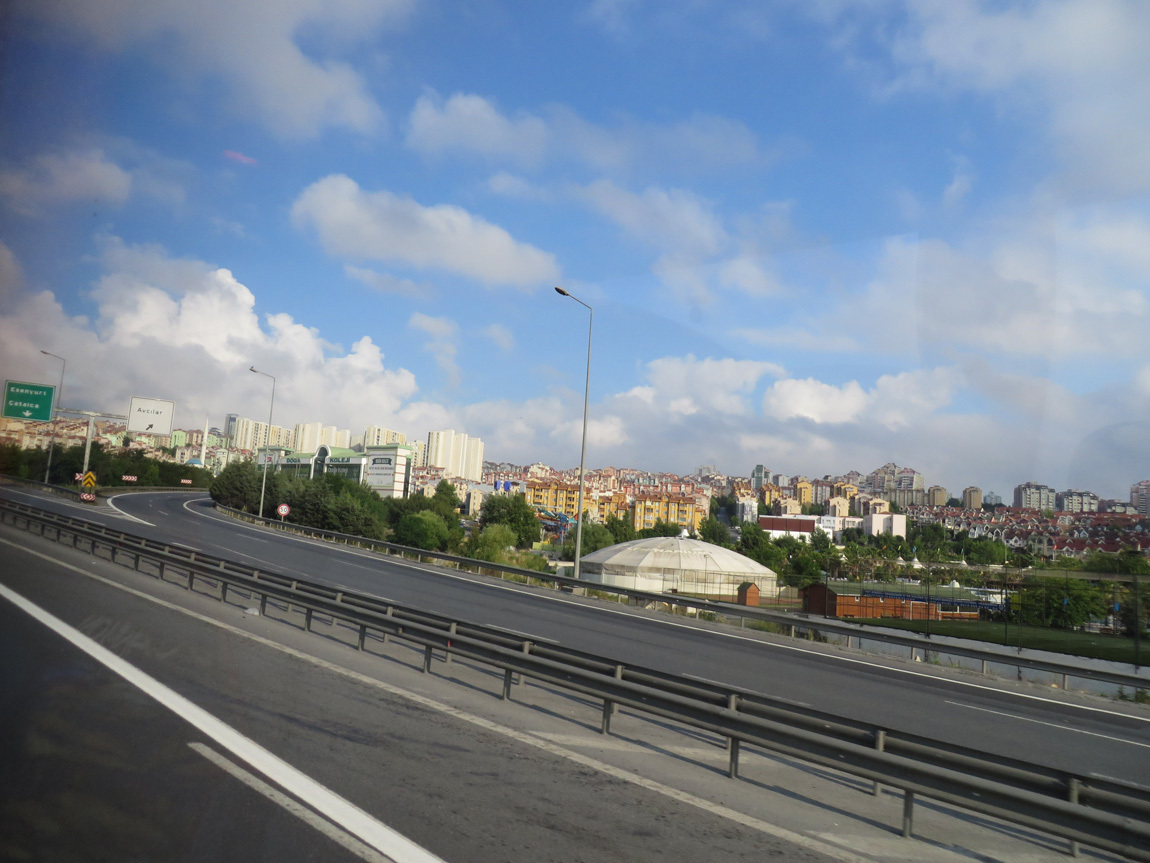
Turkey gets earthquakes. Some houses are built floor by floor as people move from the countryside to the city and slowly get jobs and make money. Many of these houses are not up to code.
Fifty minutes of highway time and we are finally in the countryside.
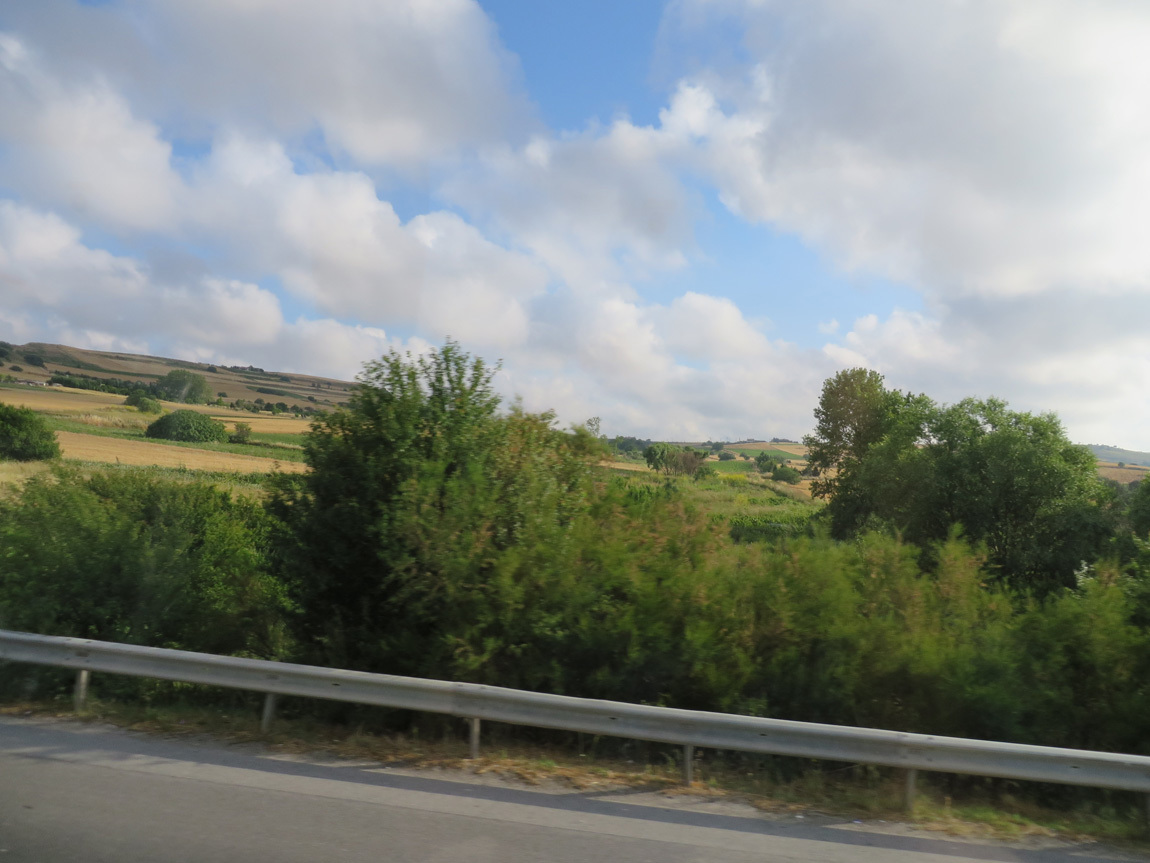
At 9 am we stop for "facilities" about two-thirds of the way along the top of the Sea of Marmara. This is a full service rest stop with a gas station, water closets, restaurant, and store.
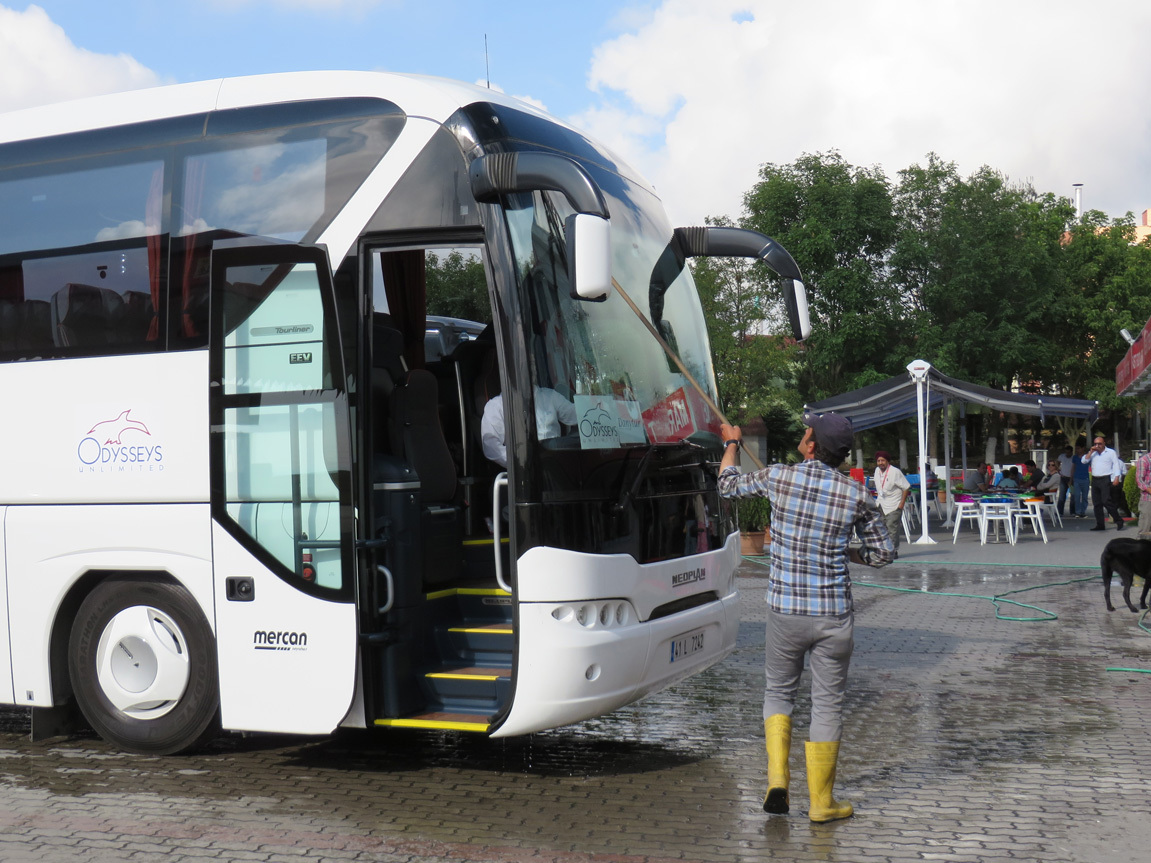
At 10:30 am, on the very start of the Gallipoli peninsula. The water in the distance is the Aegean Sea.
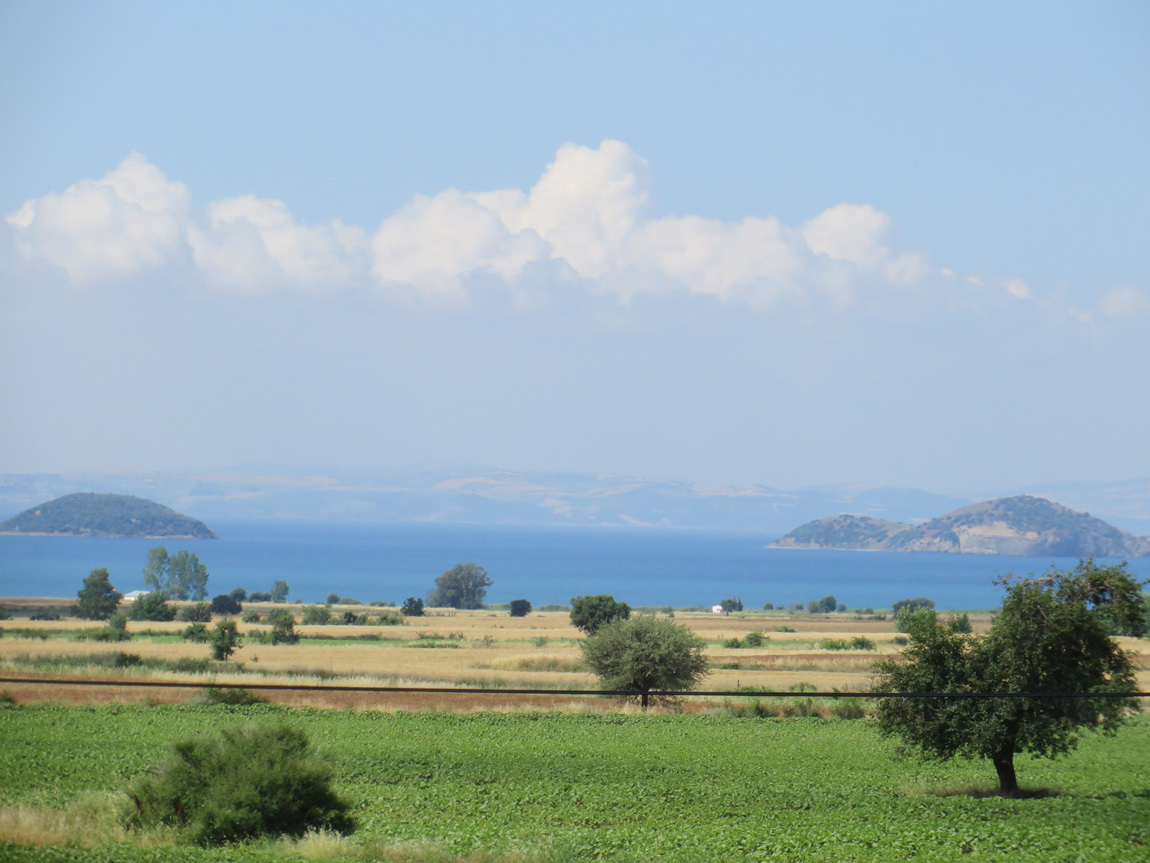
At 11 am, we have another facilities stop. This time, it's "another roadside attraction". We are about a third of the way down the Gallipoli peninsula, just above the town of Gallipoli.
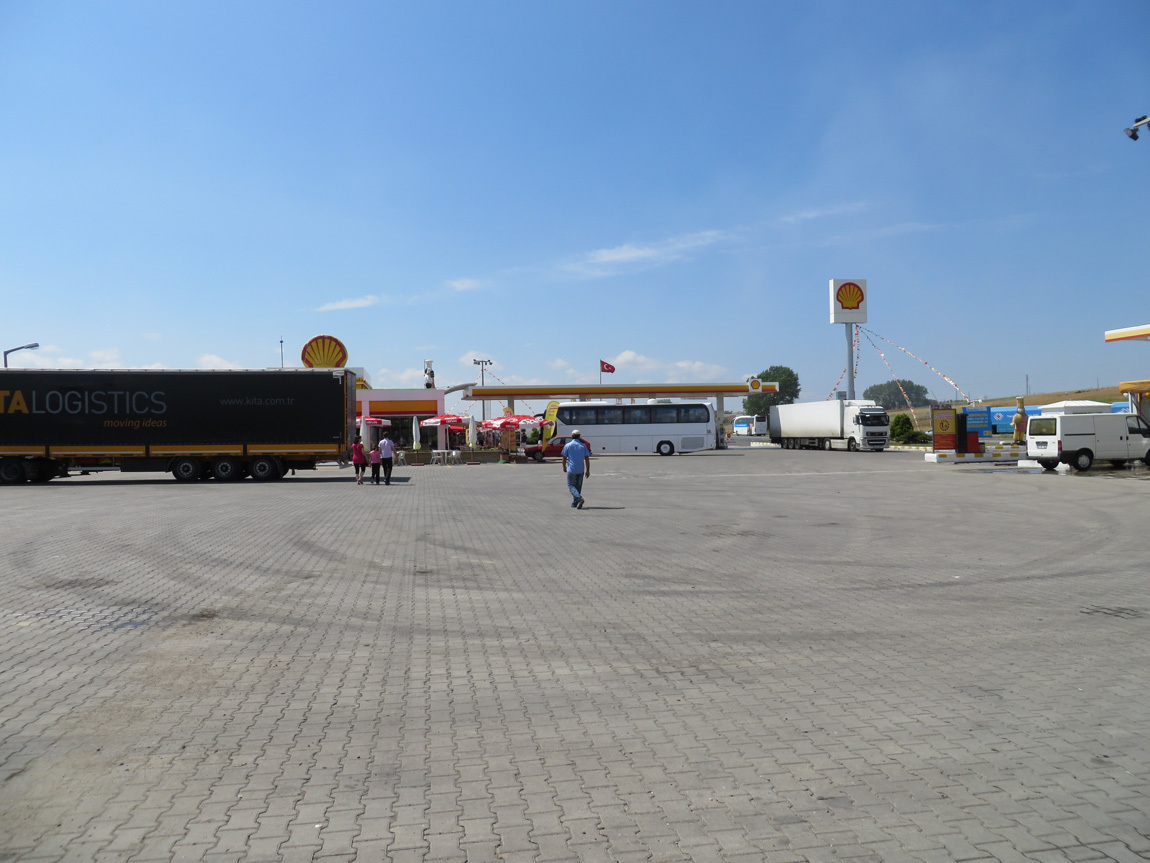
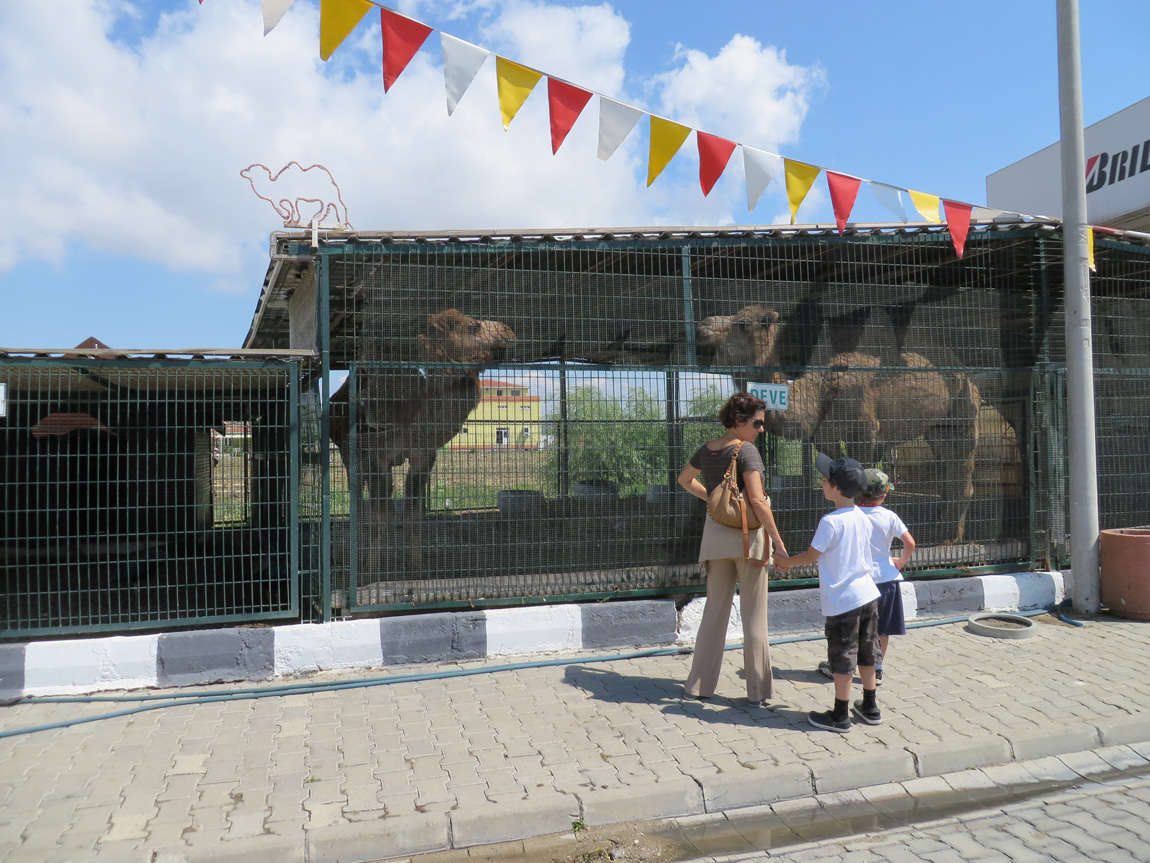
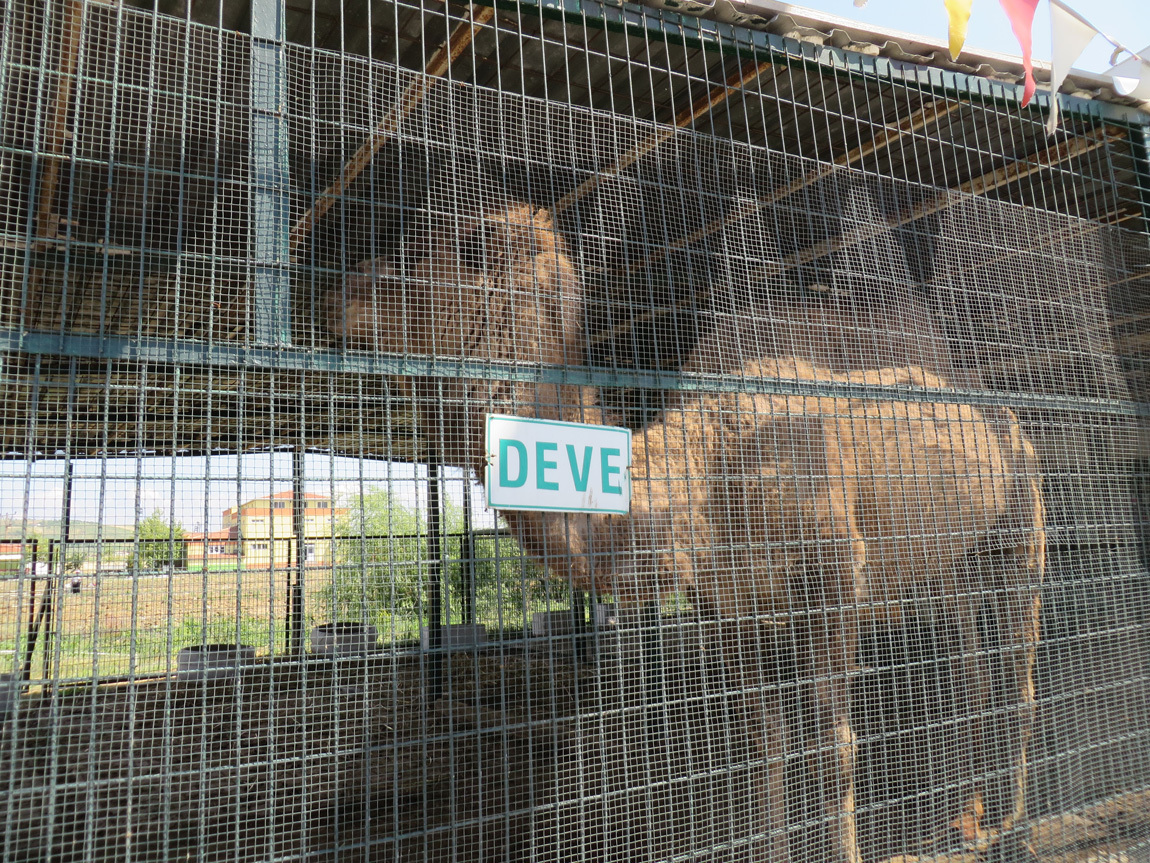
11:30 am, looking out of the bus. We are now past the town of Gallipoli, looking out west to the Dardanelles. The Dardanelles is 38 miles long and narrow, three-quarters of a mile at its narrowest, and 3.7 miles at its widest.
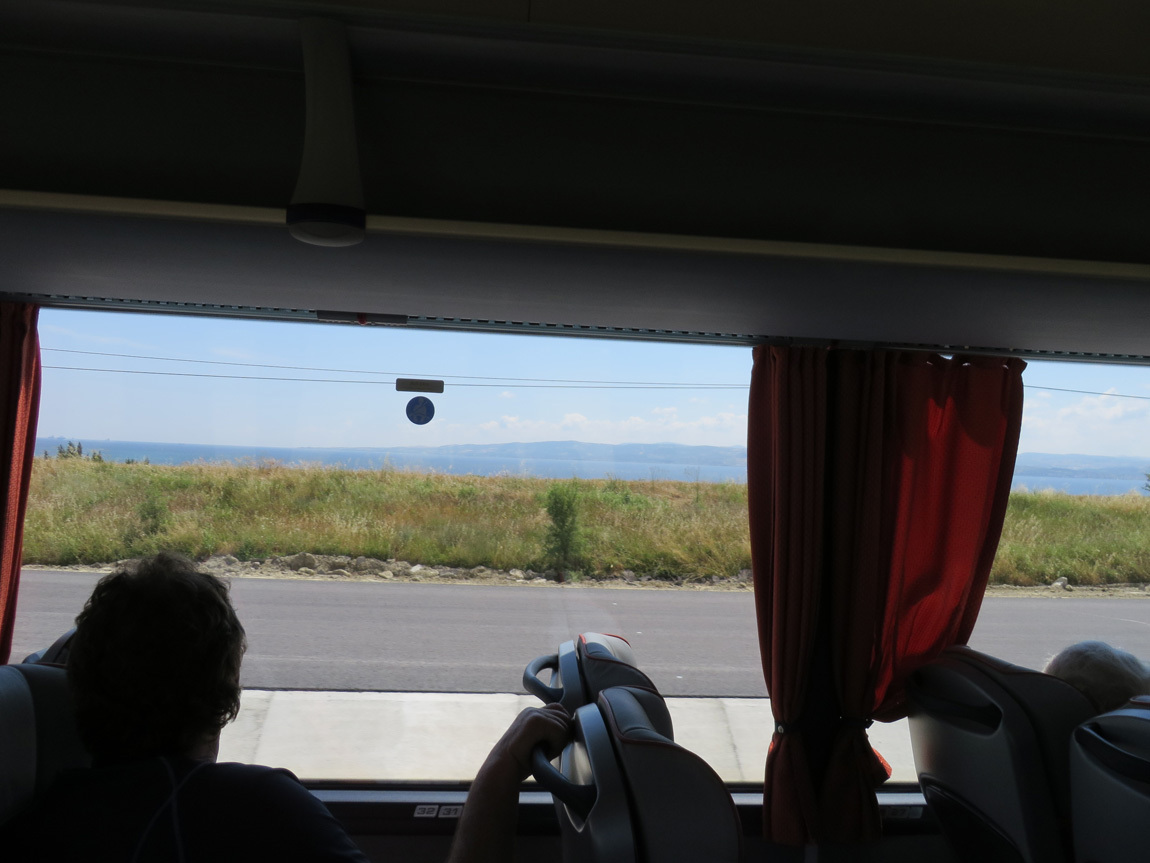
Near noon, we reach our first historical site: Gallipoli.
Turkey was on the side of Germany in WWI. In 1915, Winston Churchill promoted the capture of the Gallipoli peninsula to force open the Dardanelle strait, thus opening the seaway to Russia. He spearheaded the Gallipoli Campaign, including troops from Britain, France, Australia, New Zealand, and India. The Allies fought the Ottoman forces for 10 months throughout the Gallipoli peninsula and along the Dardanelles. Both sides suffered heavy casualties.
In 1916, the Allied forces retreated. Anaturk, who became the leader of the new democratic nation of Turkey in 1923, was a commander of the successful Ottoman forces. Churchill, on the other hand, suffered damage to his career because of his unsuccessful campaign.
About 250,000 Allied forces and 250,000 Ottomans died in the 10 month battle. That many. We visited one of the many graveyard memorials on the western Gallipoli coast. The Aegean Sea laps gently on the sands, up on a grass-covered hill white headstones mark the graves of men who died there. We quietly pay our respects.
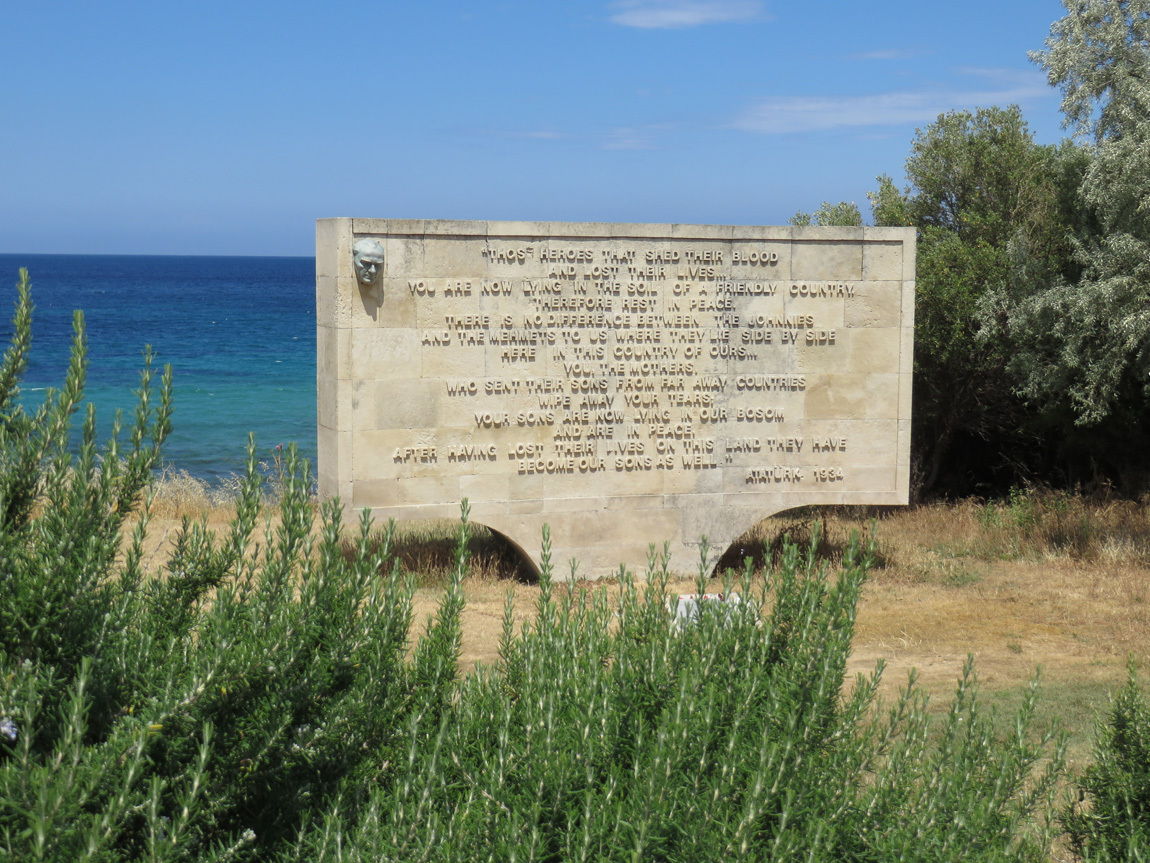
"Those heroes who shed their blood and lost their lives . . .
You are now lying in the soil of a friendly country. Therefore rest in peace.
There is no difference between the Johnnies and Mehmets to us where they lie side by side here in this country of ours . . .
You, the mothers, who sent their sons from far away countries wipe away your tears;
your sons are now lying in our bosom and are in peace.
After having lost their lives on this land they have become our sons as well."
-Anaturk 1934
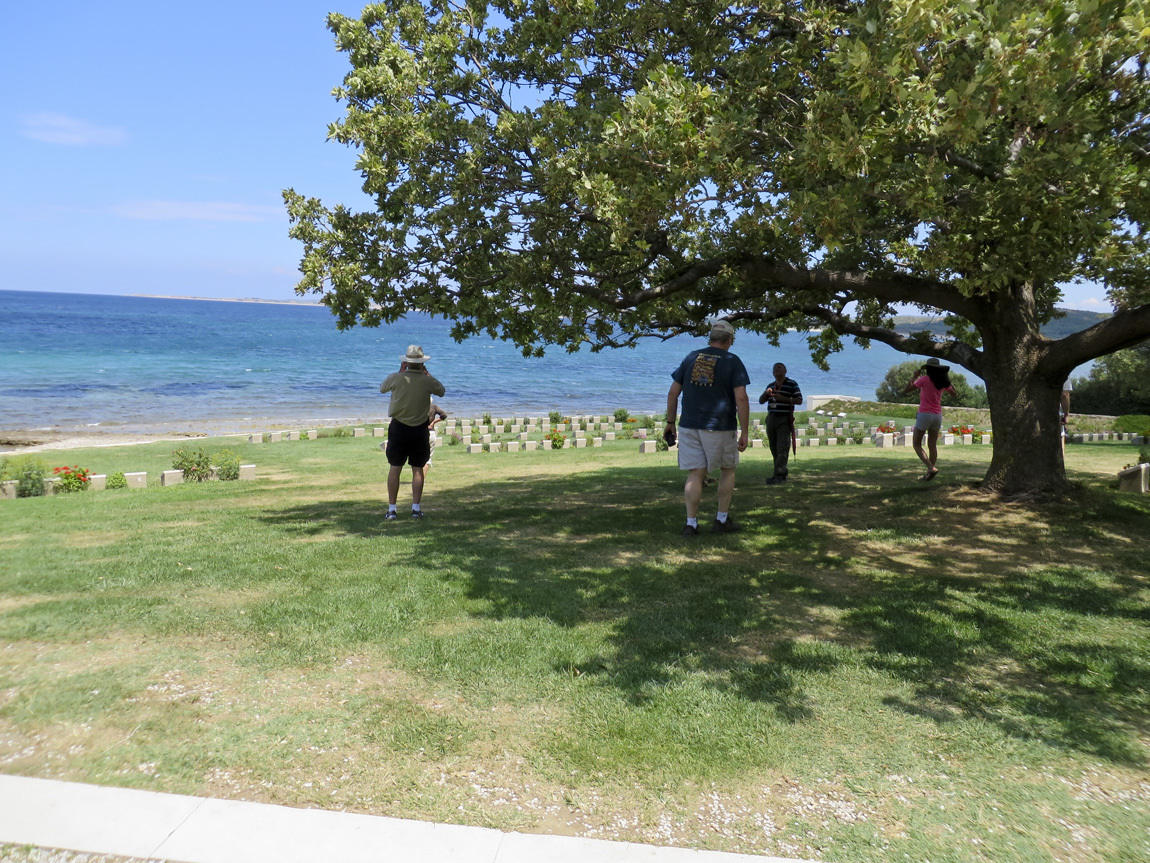
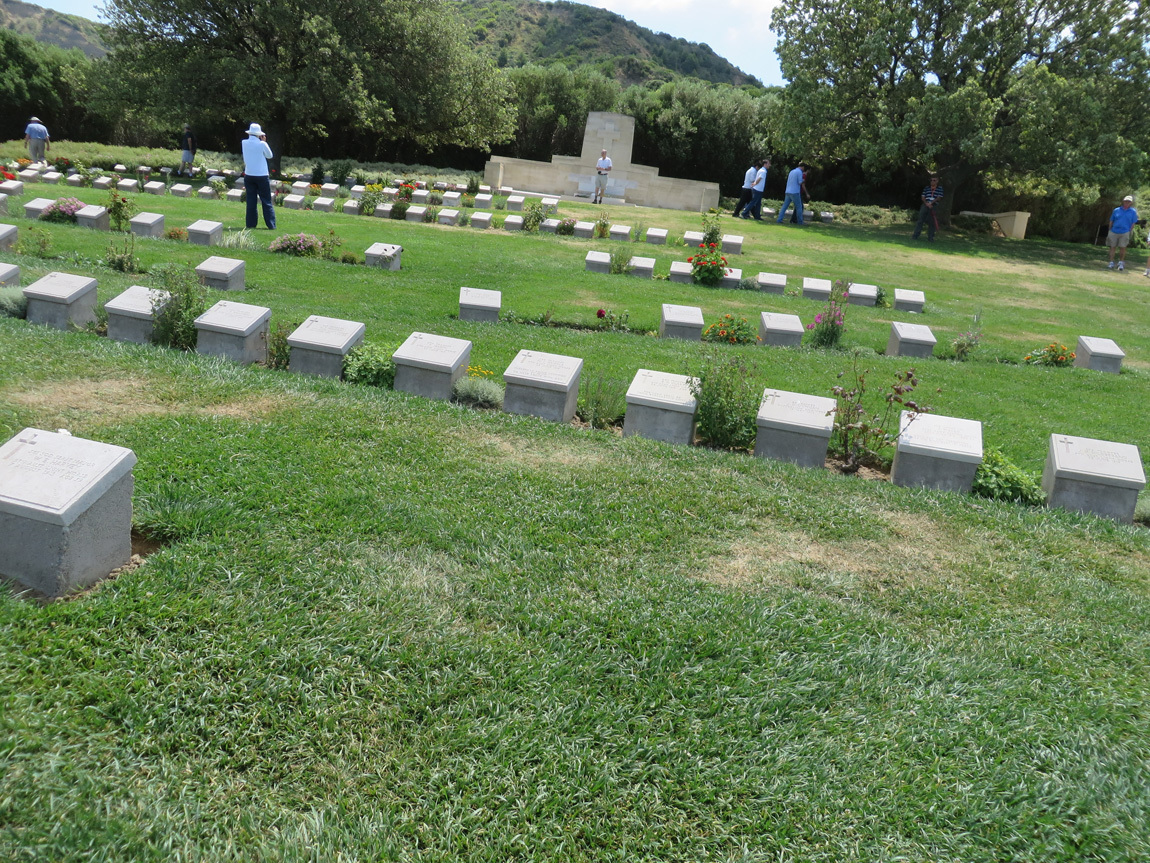
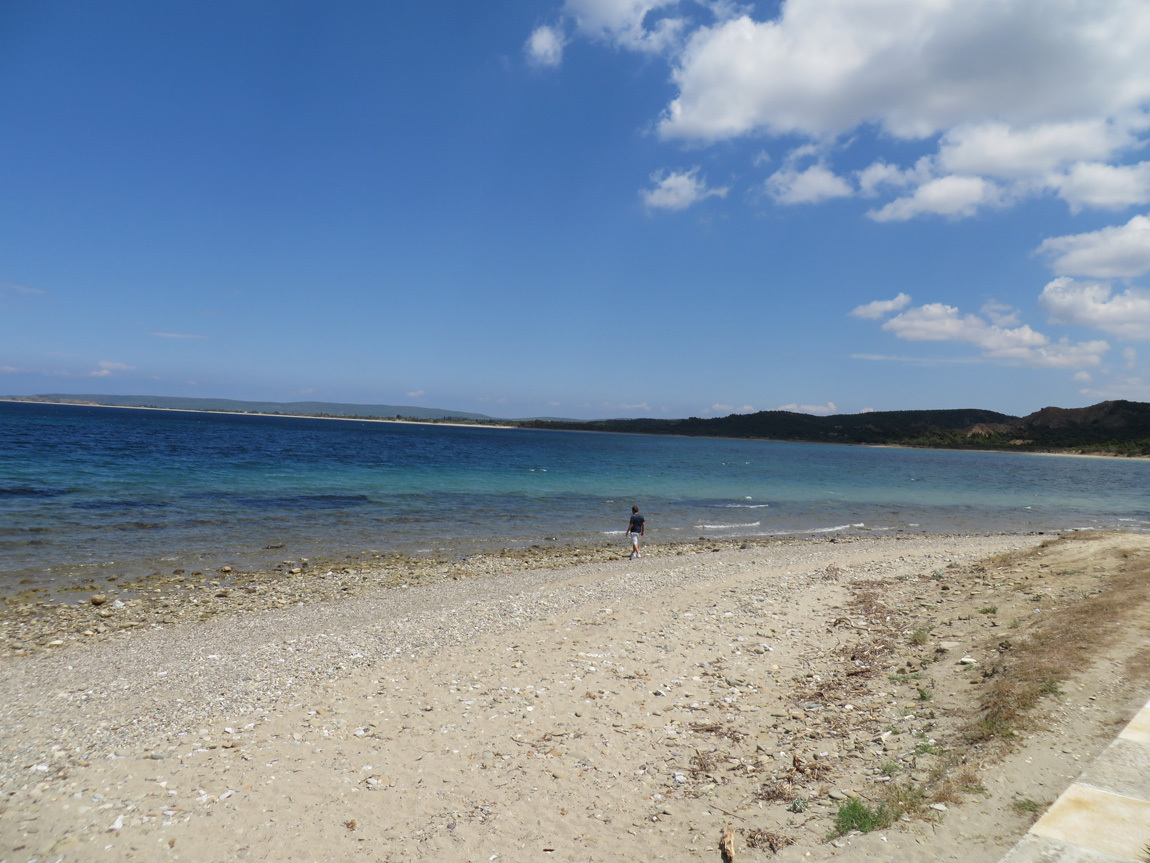
Navigation:
first Turkey post
next Turkey post
The bus is comfortable. Ali sometimes talks to all of us about Turkey, past and present, and is always willing to answer questions. We can get up and walk around, it's roomy, we have water and can pick up snacks at rest stops. Interesting views out the big windows. But still, we find bus travel wearying. The air-conditioning dries out our throats.
We first travel west out of Istanbul, above the Sea of Marmara. Reminder: the European piece of Turkey is separated from the much larger Asian portion by a strait and a sea and another strait: Bosphorus, Sea of Marmara, then the Dardanelles. We first skirt the top of the Sea of Marmara then drive down the Gallipoli peninsula, which borders the Dardanelles. We will cross the Dardanelles on a ferry to the Asian side of Turkey, where we will spend the rest of our tour.
I used my camera to stave off boredom and to document the travel with photos and also times and locations by geotags.
Half an hour of highway time and we are still in the outskirts of Istanbul. The geotag has us about a third of the way across the top of the Sea of Marmara when these photos were taken. This density of housing structures has been going on for miles. Note a few high rises infiltrating the skyline.

Most of the buildings are blocky. Most face the same way.

Turkey gets earthquakes. Some houses are built floor by floor as people move from the countryside to the city and slowly get jobs and make money. Many of these houses are not up to code.
Fifty minutes of highway time and we are finally in the countryside.

At 9 am we stop for "facilities" about two-thirds of the way along the top of the Sea of Marmara. This is a full service rest stop with a gas station, water closets, restaurant, and store.

At 10:30 am, on the very start of the Gallipoli peninsula. The water in the distance is the Aegean Sea.

At 11 am, we have another facilities stop. This time, it's "another roadside attraction". We are about a third of the way down the Gallipoli peninsula, just above the town of Gallipoli.



11:30 am, looking out of the bus. We are now past the town of Gallipoli, looking out west to the Dardanelles. The Dardanelles is 38 miles long and narrow, three-quarters of a mile at its narrowest, and 3.7 miles at its widest.

Near noon, we reach our first historical site: Gallipoli.
Turkey was on the side of Germany in WWI. In 1915, Winston Churchill promoted the capture of the Gallipoli peninsula to force open the Dardanelle strait, thus opening the seaway to Russia. He spearheaded the Gallipoli Campaign, including troops from Britain, France, Australia, New Zealand, and India. The Allies fought the Ottoman forces for 10 months throughout the Gallipoli peninsula and along the Dardanelles. Both sides suffered heavy casualties.
In 1916, the Allied forces retreated. Anaturk, who became the leader of the new democratic nation of Turkey in 1923, was a commander of the successful Ottoman forces. Churchill, on the other hand, suffered damage to his career because of his unsuccessful campaign.
About 250,000 Allied forces and 250,000 Ottomans died in the 10 month battle. That many. We visited one of the many graveyard memorials on the western Gallipoli coast. The Aegean Sea laps gently on the sands, up on a grass-covered hill white headstones mark the graves of men who died there. We quietly pay our respects.

"Those heroes who shed their blood and lost their lives . . .
You are now lying in the soil of a friendly country. Therefore rest in peace.
There is no difference between the Johnnies and Mehmets to us where they lie side by side here in this country of ours . . .
You, the mothers, who sent their sons from far away countries wipe away your tears;
your sons are now lying in our bosom and are in peace.
After having lost their lives on this land they have become our sons as well."
-Anaturk 1934



Navigation:
first Turkey post
next Turkey post
Comments
No comments yet
Add Comment